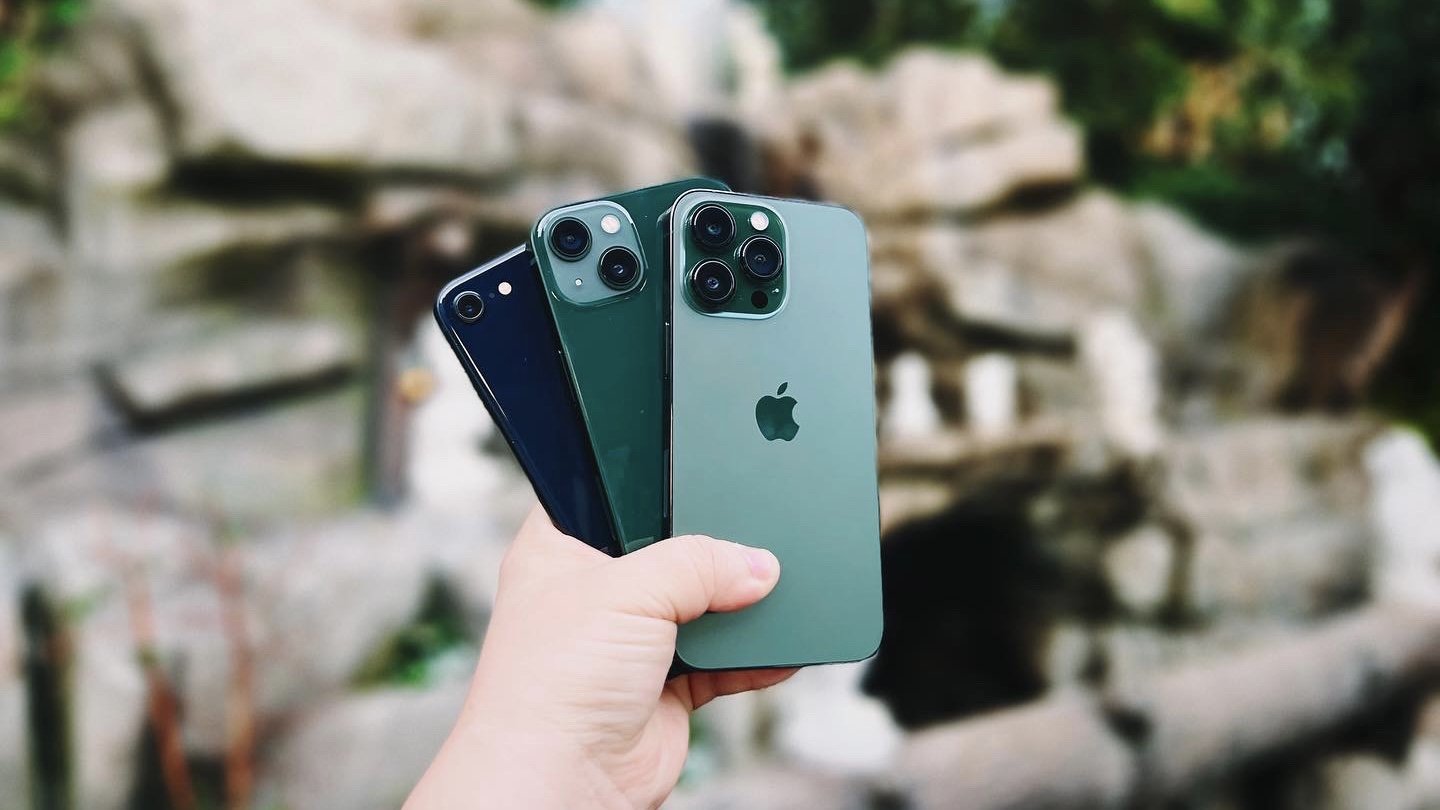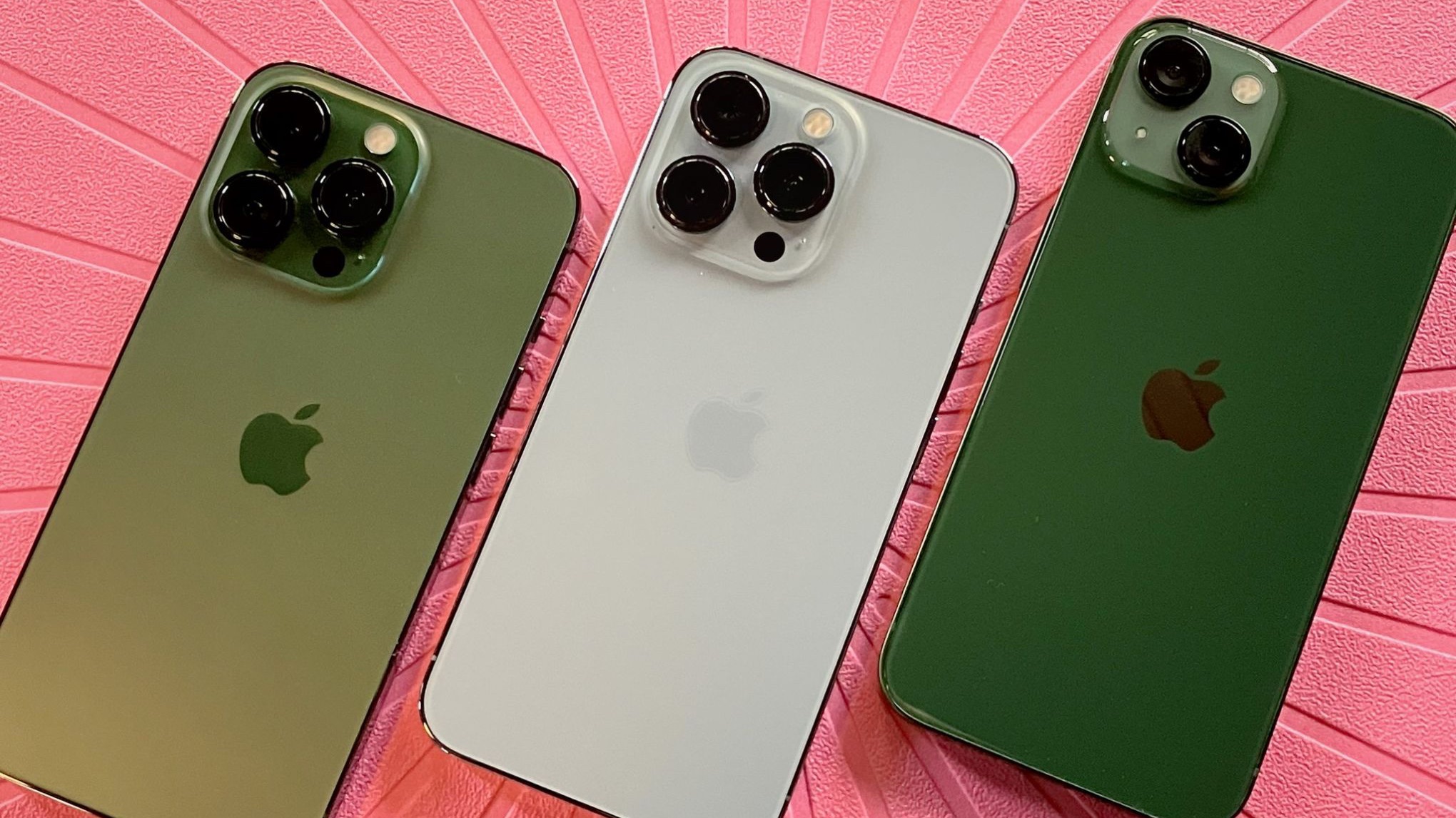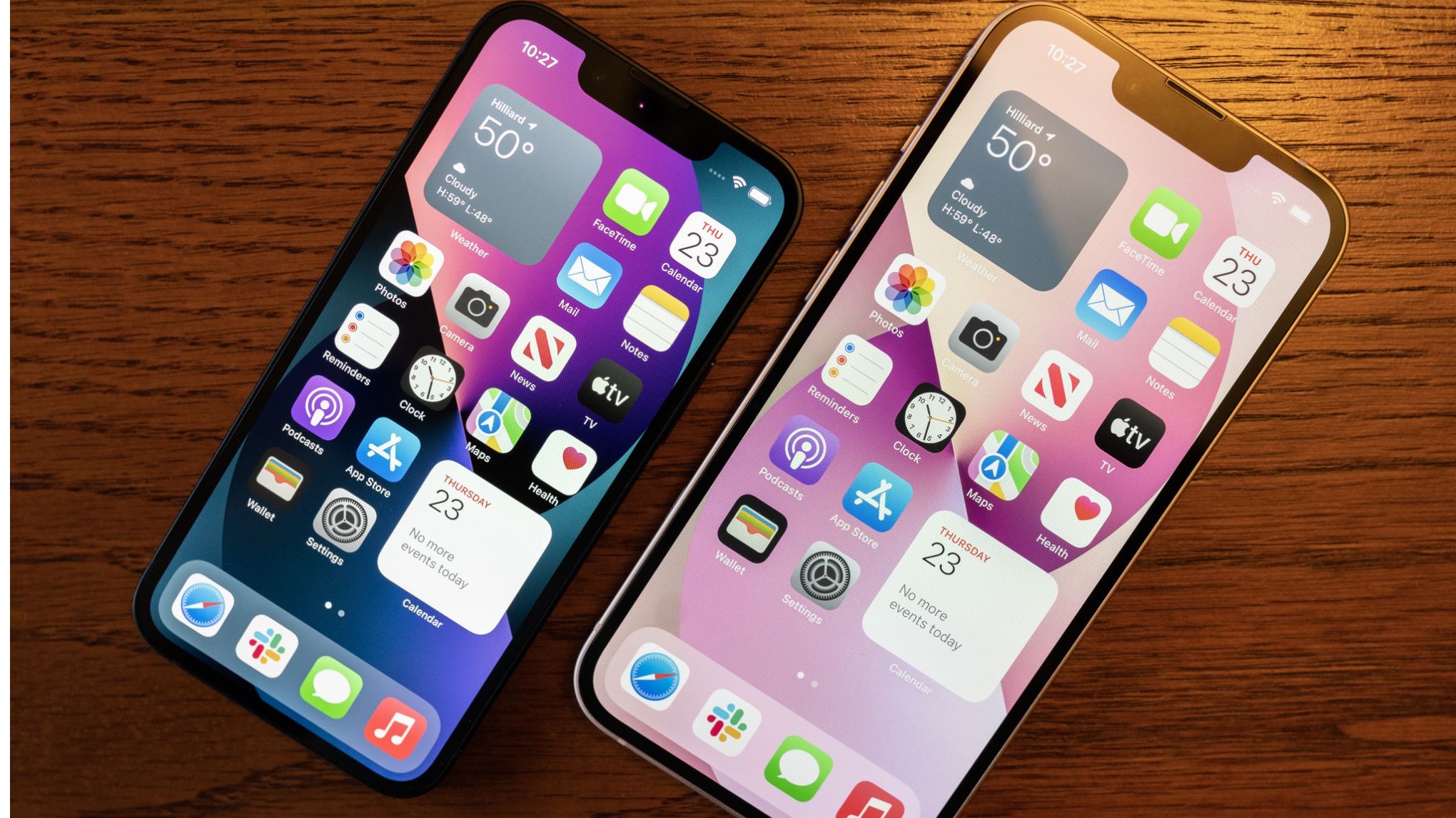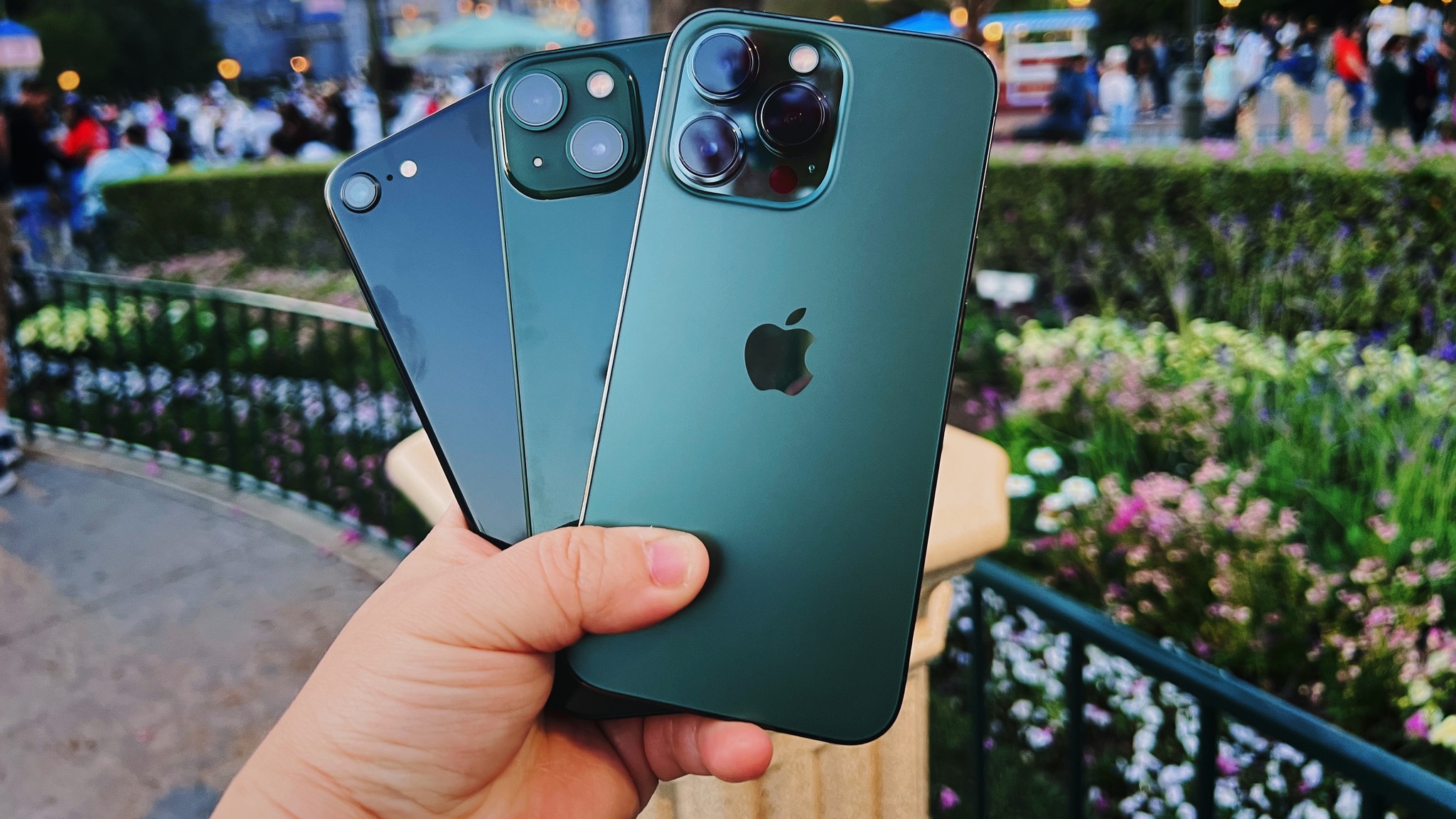I’ve bought every generation of iPhone. Here's what I've learned.
I've owned an iPhone from every generation, and here's a few things I've learned along the way.

The original iPhone launched on June 29, 2007, after Steve Jobs first revealed it on Jan. 9 during a MacWorld keynote. This little 3-in-1 device (widescreen iPod with touch controls, a revolutionary mobile phone, and a breakthrough internet communicator, as Jobs put it) literally changed the world, with just about every other cellular phone manufacturer switched over to similar designs in the years to come.
But surprisingly enough, I did not get the first iPhone on launch day, like many of you probably did. In fact, at this time, I didn’t even own a single Apple product. I heard about the iPhone, and I was definitely intrigued by it. At the time, I think I owned a Sony Ericsson K790i, which I wanted mostly for the camera capabilities — a whopping 3MP at the time (LOL).
I remember my mom bought the first iPhone for me as a birthday present in 2008, which I was surprised by. I instantly fell in love with it because it was my first Apple product, and I was just amazed by how intuitive it was to use at the time. Full web pages on a cell phone? It definitely beat those horrible WAP pages back in the day. But my clumsy self eventually dropped the naked iPhone on hard cement, shattering the screen. I learned I couldn’t really deal with having a broken screen, so I planned to purchase the new iPhone 3G with some money I had saved up.
This started my annual tradition of buying a new iPhone, and I’ve kept it going for the past 14 years. The original iPhone also ignited my affinity for Apple products in general, and I eventually bought a white plastic MacBook (really wish I had the black plastic MacBook, though), iPods, iPads, and Apple Watches. Here’s what I’ve learned from my annual tradition.
iPhone camera upgrades sparked my love for mobile photography

Before the iPhone, I was interested in general photography and dabbled with it during my college years. I even bought digital cameras when it was popular to have one with you everywhere, just to capture all of those spontaneous moments with friends and family. And as much as I loved taking pictures with my camera, I did always think it was annoying to have to carry it around.
Even though the iPhone had a 2MP camera at the start, I enjoyed the convenience factor. The 3.5-inch screen was bigger than the tiny little 2-inch screen on my K790i, and even though there were fewer megapixels, I just liked having a larger screen as the viewfinder. It made taking photos much more fun because you could see more.
But it wasn’t until the iPhone 4 that Apple started to really take photography seriously. The iPhone 4 came with a 5MP camera (versus the 3MP on the iPhone 3GS) with LED flash, which changed things up and set us down the road for future camera upgrades each year. The iPhone 4S through 5C had 8MP cameras, and the first generation iPhone SE/iPhone 6S started with the 12MP cameras we continue to have today, even in the iPhone 13 Pro.
Master your iPhone in minutes
iMore offers spot-on advice and guidance from our team of experts, with decades of Apple device experience to lean on. Learn more with iMore!
But along the way, there have been numerous camera upgrades beyond megapixel count, such as HD video recording, Portrait mode, Night mode, ProRAW, ProRes video, Cinematic mode, ultra-wide and telephoto lenses, sensor-shift optical image stabilization, and so much more. Apple has continued to add powerful new camera features year after year, which is why the annual upgrade is so appealing to me.
Since the iPhone 4, which showed that Apple was taking iPhone photography seriously, it ignited a real passion for mobile iPhone photography for me.
Plus, with the App Store, there are so many great third-party apps that serve as excellent replacements for the native Camera app, or provide more powerful tools than what Apple offers in the Photos app. On top of that, a lot of developers, such as Halide, update their apps to include features that take advantage of what the best iPhones have to offer.
With such a massive arsenal of tools that are easily available, I simply love using my iPhone for all of my photography and video needs. I don’t need a standalone DSLR or anything bulky like that. I’m not a professional photographer who makes a living that way; I just dabble in it for fun, and the iPhone is good enough for me with all of Apple's upgrades. And I have certain apps on my iPhone and iPad that I enjoy using to tweak my photos when they need them.
Again, I’ve always had an interest in photography, but the convenience and power of the iPhone just can’t be beat.
Other than the camera, other iPhone upgrades are usually quite incremental

As I just mentioned, the biggest draw for me in getting a new iPhone every year is the upgrades and improvements to the camera. That’s mostly what I look forward to during the announcements because otherwise, most of the upgrades that Apple introduces are quite small for most people. There are some exceptions of course, such as going from the iPhone 3GS to the iPhone 4 with Retina Display.
Yes, each new iPhone generation will include a new, faster chip. But honestly, I’m very happy with my iPhone 13 Pro’s A15 chip because it’s still blazing fast for what I need my iPhone for daily, and I’m sure many other people feel the same way. The A15 isn’t going to just become incredibly slow once the A16 debuts, and with recent reports that Apple will only put the A16 in the iPhone 14 Pro and not the standard iPhone 14, I’m quite certain that the A15 will still hold up just fine. Is launching my Twitter app or Instagram/Facebook a second faster really going to make a significant impact on my life? I’m sure that having a faster chip may be more important for things like playing graphically intensive games, but even then, it’s not going to be the end of the world if you’re on an A14 or A15.
Then there’s the display. As much as I love my ProMotion display on the iPhone 13 Pro, it’s pretty negligible for the average person. Even I can’t really tell the difference unless I put my device side-by-side with an older device that doesn’t have ProMotion, and even then, the non-ProMotion display still looks great. I think the only time that the display was not just an incremental update was when Apple made the leap to Retina and then OLED. Otherwise, display improvements are mostly too subtle for the average person.
Again, I think the biggest upgrades that Apple does for each new generation is with the camera. If you wait a few years between iPhones, then these will seem much bigger, but year-to-year? Not so much.
Absolutely need an iPhone every year? The iPhone Upgrade Program is the best way

Before Apple introduced the iPhone Upgrade Program, I would buy my new phone and then sell the old one on something like Craigslist (I don’t like dealing with shipping) since iPhones hold resell value quite well compared to competitor devices. I also would occasionally trade it into one of those buyback programs like Gazelle because I didn’t want to deal with sketchy people, and honestly, I was lazy.
But when Apple launched the iPhone Upgrade Program, it became the best solution for those like me who upgrade every year. Buy an iPhone on what is essentially an interest-free loan for 24 months, make 12 payments, and then when the next iPhone comes around, turn in your current iPhone (threfore ending the loan) and upgrade to the new one, starting a new 24-month loan again. Basically, you’re leasing an iPhone every year for just 12 monthly payments.
Of course, if you pay it off, you can keep the iPhone and do whatever you want with it — no need to turn it in after making 24 payments.
If you need a new iPhone every year, it's hard to beat the iPhone Upgrade Program.
The monthly payments on the iPhone Upgrade Program are a little more than if you were to get it from your carrier, or even if you use your Apple Card monthly payments, however. That’s because the iPhone Upgrade Program also includes two years of AppleCare+, which is factored into your monthly payment. It may end up being a little more than normal, but honestly, I find the extra peace of mind nice to have in case anything happens.
If you want to get the latest and greatest iPhone every year, then the best way to go about it is through the iPhone Upgrade Program. There’s little reason not to if it’s available in your country and you just like always having the shiny new toy.
The iPhone Upgrade Program isn’t perfect. Last year, with the iPhone 13, there was some kind of glitch that prevented me from making my upgrade on the iPhone Upgrade Program with my Apple Card, and I didn’t want to not use my Apple Card (you get 3% cash back with it, even on the Upgrade Program), so I just bought my phone outright. It was a hefty chunk of change (I got the 1TB iPhone 13 Pro), but it’s also kind of liberating to not have another monthly payment to worry about for the time being.
I may or may not hop back on the iPhone Upgrade Program this year, but for most people, the monthly payments are a lot easier to swallow than over $1,000 at once.
The iPhone just works for me

I will admit that I've wanted to try out some of the more recent Android devices, such as the Samsung Galaxy Z Flip 3, because the hardware is unique, and I could truly customize the device in terms of software. But then I think about what I use on a daily basis — iPhone, Apple Watch, Mac, iPad — and then I reconsider.
For me, Apple gear simply works best for me (working for iMore notwithstanding). I use AirDrop constantly throughout the day to easily get images off my iPhone and to my iMac, no cables required. I also frequently use Handoff and Continuity across all of my devices to pick up where I left off seamlessly. I’m not sure if Android devices have such a feature that works with PCs, but I can’t do without it.
Maybe I don’t necessarily need the newest iPhone just to have seamless integration with all of my other Apple devices (I don’t upgrade my Mac, iPad, or Apple Watch every year), but I like to think of it as future-proofing. After all, Apple has shown multiple times that it likes to keep some new software features locked behind the latest devices — see the Stage Manager for iPad debacle in Exhibit A. My iPhone is probably the device that I use and depend on most, so I like to keep it as up-to-date as possible.
Christine Romero-Chan was formerly a Senior Editor for iMore. She has been writing about technology, specifically Apple, for over a decade at a variety of websites. She is currently part of the Digital Trends team, and has been using Apple’s smartphone since the original iPhone back in 2007. While her main speciality is the iPhone, she also covers Apple Watch, iPad, and Mac when needed. When she isn’t writing about Apple, Christine can often be found at Disneyland in Anaheim, California, as she is a passholder and obsessed with all things Disney, especially Star Wars. Christine also enjoys coffee, food, photography, mechanical keyboards, and spending as much time with her new daughter as possible.

